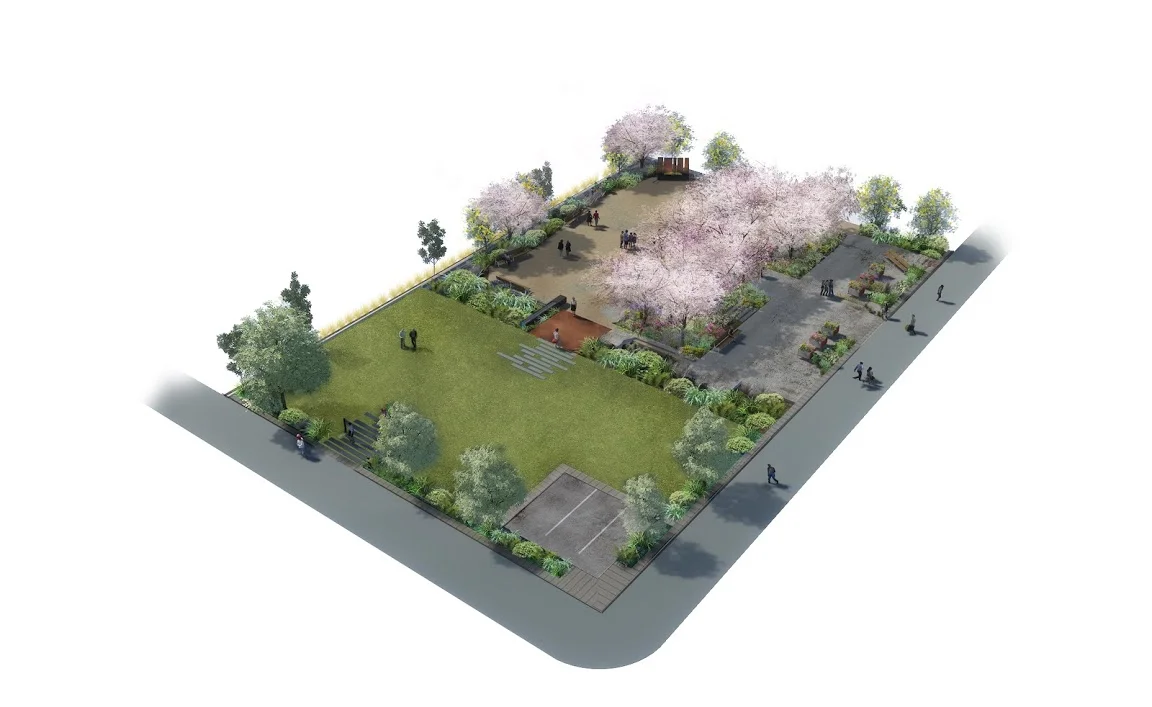Designing to remember - paying tribute to the former CTV site in Christchurch
The site of the former CTV building on the corner of Cashel and Madras streets is one of the most significant reminders of the February 2011 earthquake in Christchurch. The collapse of the building in the quake resulted in the loss of 115 lives, with many more injured.
Designing a tribute fitting to the site was a highly sensitive process. The design team from Jasmax worked for crown development company, Otakaro Limited, to deliver a design that played tribute to the gravity and sadness of the space but also aimed to provide a little lightness and hope.
The former CTV site in Christchurch - Photos courtesy of Jasmax
From the beginning the families and other stakeholders were a crucial part of the design process.
Landscape architect, Rob Lawry, from the Christchurch office, was the project lead. He says, “Jasmax came to this project when there was an overall concept in place and then we added to it. The key question we were working with was - does this serve the wishes of the families? This is not an earthquake memorial as such, that formal site exists down at the official memorial wall on the Avon River. This is an intimate space, a site of memory.”
An intimate space to remember - photo courtesy of Jasmax
The design grew out of the building foundations.
“The slab was a key driver in the design. It was to remain in place as a remnant, a memory. The slab was not a flat piece of concrete. It has various levels, cracks and visible ground beams. We filled them with planting.”
The covering and uncovering of the slab was to provide choice to people entering the site.
A render of the finished project - courtesy of Jasmax.
“It can be confronting, so we designed it in such a way that you can walk off Cashel St, across the grass that is the former carparks, rinse your hands in the water feature, and walk out across the bridge, all without touching the slab if you so choose.”
Another key component in the design of the site was the idea of youthfulness. Families expressed a wish that as so many who lost their lives were young, the site would be a place that reflected that. Alongside the site’s four surviving trees, there are new Cherry Blossom and Kowhai trees and a large green lawn.
“It is designed to be organic,” says Rob. “We wanted the space to be open ended in the way people interact with it. There is a perforated steel wall where people have come and laid tributes, and a plinth, but we have left it deliberately inviting to place tribute in other areas. It’s not prescriptive.”
The work was completed on a tight timeframe of eight months, with Rob on site almost daily during the construction process. The contractors were City Care and JFC. Despite the time pressure, Rob says it was one of the smoothest projects he’s worked on.
“Everyone understood the sensitivity of the area. We all wanted to create something special.”
The space was opened with a blessing on 21st February, 2018, on the eve of the seven-year anniversary of the earthquakes. In order to come full circle and acknowledge those that had lost loved ones, some areas were left unplanted, and the families were invited to put the final plants in the ground.
“One family member had bought along her own tree, a Southern Rata. Her mother was one of the three that were never recovered from the site. We quickly shuffled other plants around so we could give her future forest giant enough space to grow to its fullest potential.”
Photo courtesy of Jasmax.
Rob remembers being evacuated out of the old Jasmax building in Hereford St, standing in Latimer Square, and looking south to the CTV building on the day of the quakes. He says the feedback received so far has been “overwhelmingly positive.”
“The great thing about this is that it’s a living design. The plantings will grow and it will get better and better. Eventually, it will be infolded into the residential space of the East Frame. Our aim is that this is functional as a pocket park, yet is always respectful. It will always be an important piece of our city.”




